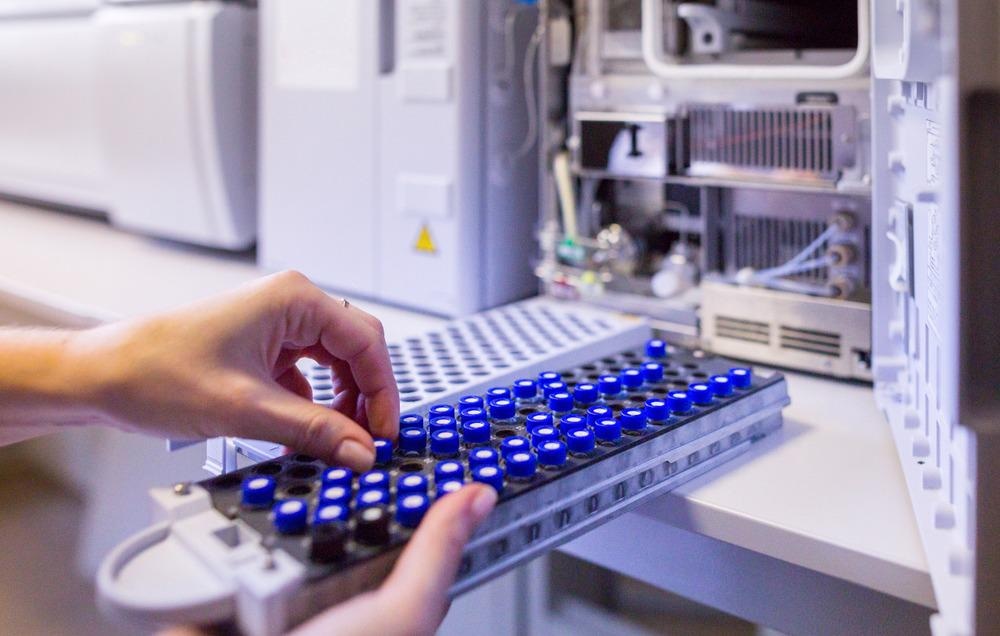Improvements in mass spectrometry technology that have occurred over the last decade have helped to further the field of lipidomics. In general, advances in mass spectrometry have led to the establishment of high-resolution lipidomics platforms that are fundamental to gaining a deeper understanding of cellular processes and disease. Here, we look at why lipidomics is important and how advances in mass spectrometry have helped to further this field of science.

Image Credit: Sodel Vladyslav/Shutterstock.com
Why is Lipidomics Important?
Lipids are considered to be an important compound class in biological systems, and they serve vital physiological tasks. First, they are fundamental to the formation of cellular membranes. Second, they are responsible for energy storage. Finally, lipids are important for signaling and play a vital role in intermolecular and intramolecular autocrine, paracrine, and endocrine regulatory processes.
Because lipids are important in the functioning of many cellular processes, they are also critical in the establishment and development of several diseases, as well as how they respond to treatment. For example, studies have shown that chronic inflammation, cancer, cardiovascular disease, and neurodegenerative disorders are all linked to lipid activity to some extent. Therefore, the identification and quantification of lipids is an important tool for developing new diagnostic and therapeutic approaches.
Over the years, mass spectrometry has emerged as the most suitable technique for identifying and quantifying lipids, helping biomedical research approach their diagnostic and therapeutic goals.
Publications relating to lipidomics have increased by a factor of 7.7 in the last decade, with much of this progression being linked to advances in mass spectrometry tools, particularly, high-resolution mass spectrometry tools.
Advances in Mass Spectrometry to Further Lipidomics
Sector mass spectrometry
Sector mass spectrometry was first used for lipid analysis in the 1980s. Since then, the method has been developed so that it currently offers the benefits of high resolution and accuracy, as well as the capability of generating high-energy collisional-activated dissociation (CAD). This leads to charge remote fragmentation (CRF) reactions, resulting in the localization of structural details such as branches, double bonds, epoxy-, hydroxy-, cyclopropane, and cyclopentane moieties.
Today, sector mass spectrometry remains a leading tool for the in-depth structural elucidation of lipids.
Matrix-assisted laser desorption ionization-time-of-flight (MALDI-TOF)
Since the late 1990s, MALDI-TOF instruments have been used for the analysis of lipids. However, their lack of development and inherent limitations have caused their usage to remain limited.
Future directions may focus on overcoming the main drawbacks of the technology, which are the lack of automatization and the inability to embed into high throughput lipidomic workflows. Advancements here offer a big opportunity to see MALDI-TOF technology become more commonly used for lipidomic analysis.
Mass spectrometry imaging
MALDI-TOF is most important in its application in mass spectrometry imaging. The most common application potentially being the investigation of lipids in organ tissue, where cryo-dissections of organs are placed onto a MALDI target and covered with a MALDI matrix before scanning them by laser in two dimensions to create an image that details the location of lipids.
The major advantage of mass spectrometry imaging is that it allows an increased amount of time to be spent on each pixel, resulting in very deep coverage.
Shotgun lipidomics
Shotgun lipidomics is an umbrella term, encompassing a variety of instrumental platforms that operate in direct infusion and rely on electrospray ionization (ESI).
High mass resolution is increasing the reliability of analyses performed by this technology. Although when most instrumental lipidomics platforms developing in the pioneering phase of the 1990s were operated under nominal mass resolution, developments over the last two decades have caused a profound shift towards high mass resolution equipment.
Liquid chromatography-mass spectrometry (LC-MS)
Reversed-phase chromatography and hydrophilic interaction liquid chromatography (HILIC) are the two most used LC-MS approaches. Revered-phase chromatography works by separating lipids by the composition of their fatty acyl chains, whereas HILIC works by separating lipids according to their polar head groups.
Advances over the last decade have seen supercritical fluid chromatography (SFC) reach maturity in the field of lipidomics to offer advantages in LC-MS.
Channeltron® electron multipliers
Over the last two decades, numerous pieces of equipment have emerged onto the market to provide high sensitivity and high accuracy methods of mass spectrometry.
Such equipment has helped to further the field by continually developing the applications of mass spectrometry in lipidomics.
One such technology is the Channeltron Electron Multipliers from PHOTONIS, designed for mass spectrometry and to operate at higher voltages to improve ion-to-electron conversion and enhance sensitivity at higher masses.
Conclusion
To date, many advances have been made in mass spectrometry which has translated into developments in the field of lipidomics. However, some natural limitations to these methods remain and must be overcome before either industry can reach its full potential.
In the coming years, it is likely that we will see further developments that take steps towards this.
References and Further Reading
Channeltron® electron multipliers. [Online]. Photonis. Available at: https://www.photonis.com/products/channeltron-electron-multipliers (Accessed 17 October 2021)
Channeltron Electron Multipliers for Mass Spectrometry from PHOTONIS. [Online]. AZo Optics. Available at: https://www.azooptics.com/optics-equipment-details.aspx?EquipID=570 (Accessed 17 October 2021)
Züllig, T. and Köfeler, H., 2020. HIGH RESOLUTION MASS SPECTROMETRY IN LIPIDOMICS. Mass Spectrometry Reviews, 40(3), pp.162-176. https://analyticalsciencejournals.onlinelibrary.wiley.com/doi/full/10.1002/mas.21627
Disclaimer: The views expressed here are those of the author expressed in their private capacity and do not necessarily represent the views of AZoM.com Limited T/A AZoNetwork the owner and operator of this website. This disclaimer forms part of the Terms and conditions of use of this website.